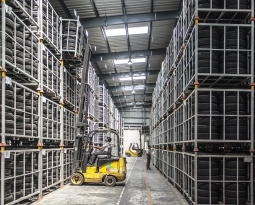North Carolina Patent of the Month – April 2024
The world of cell culture and analysis is constantly evolving, driven by innovative technologies that push the boundaries of what’s possible in biomedical research. One such groundbreaking invention comes from Cell Microsystems, Inc., offering a revolutionary apparatus for collecting and culturing cells and cell colonies.
At the heart of this invention lies a substrate formed from a flexible resilient polymeric material, boasting an array of wells meticulously designed to accommodate a variety of cell types. But what sets this apparatus apart is the inclusion of micro-elements comprising a unique polysilsesquioxane polymer. These micro-elements, with their core structure of RSiO1.5, offer unparalleled optical properties and compatibility with cell culture applications.
Imagine a world where cell imaging is not hindered by autofluorescence or inconsistent refractive indices. Cell Microsystems’ invention brings this vision to life by providing micro-elements with ultra-low autofluorescence, ensuring high-resolution imaging of subcellular structures without compromising signal integrity.
But the innovation doesn’t stop there. These micro-elements can be further enhanced with ferromagnetic particles, opening up new avenues for cell manipulation and isolation. With the ability to functionalize the micro-elements with various chemical moieties, researchers have unparalleled flexibility in designing experiments tailored to their specific needs.
The manufacturing process is equally impressive, utilizing a mixture of polysilsesquioxane and a compatible solvent like gamma-butyrolactone (GBL). Through a series of carefully controlled steps, including coating the substrate and drying to remove the solvent, Cell Microsystems achieves a final product that’s ready to revolutionize cell culture and analysis.
By providing researchers with a tool that combines cutting-edge technology with ease of use, Cell Microsystems is paving the way for advancements in biomedical research. Whether it’s isolating single cells for clonal expansion or high-resolution imaging of cellular structures, this invention unlocks new possibilities and accelerates scientific discovery.
Are you developing new technology for an existing application? Did you know your development work could be eligible for the R&D Tax Credit and you can receive up to 14% back on your expenses? Even if your development isn’t successful your work may still qualify for R&D credits (i.e. you don’t need to have a patent to qualify). To find out more, please contact a Swanson Reed R&D Specialist today or check out our free online eligibility test.
Who We Are:
Swanson Reed is one of the U.S.’ largest Specialist R&D tax advisory firms. We manage all facets of the R&D tax credit program, from claim preparation and audit compliance to claim disputes.
Swanson Reed regularly hosts free webinars and provides free IRS CE and CPE credits for CPAs. For more information please visit us at www.swansonreed.com/webinars or contact your usual Swanson Reed representative.

















